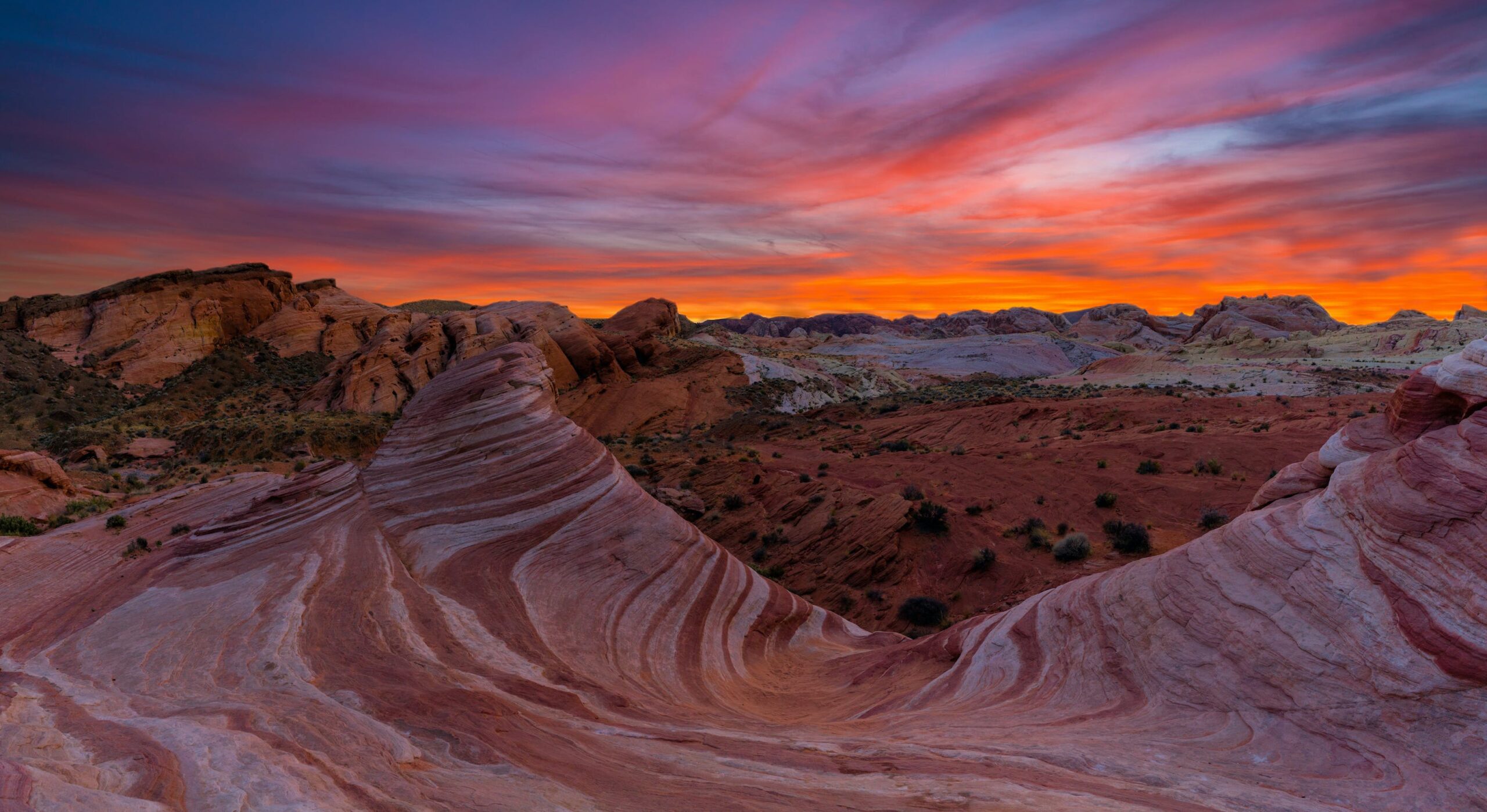The Red Rock Canyon National Conservation Area, which is located a short drive west of Las Vegas, is a stunning example of the Mojave Desert’s pure splendour. Red Rock Canyon offers a captivating landscape full of natural wonders and outdoor adventures. It is a haven for nature lovers, outdoor enthusiasts, and those looking to escape the bright lights of the nearby city.
Here are a few things you have to know about Red Rock Canyon National Conservation Area!
Situated in Clark County, Nevada, the United States, the Red Rock Canyon National Conservation Area spans across 1,95,000 acres is easily visible from the Las Vegas Strip and is roughly 15 miles (24 km) west of Las Vegas. Every year, the area welcomes over three million visitors.
Large red rock formations, including walls and peaks made of sandstone present in the conservation area. The walls are a popular spot for rock climbing and hiking because they reach heights of up to 3,000 feet (910 meters). La Madre Mountain, at 8,154 feet, is the highest point.
Calico Basin:
The often-overlooked Calico Basin, a hidden gem near Red Rock Canyon, is known for its vivid red sandstone and lush vegetation. It links to both the Kraft Mountain Trailhead and the Girl Scout Trail. After packing a picnic to enjoy at one of the few picnic tables at Red Springs, head over to the Calico Basin Trail for fantastic hiking and horseback riding, historic petroglyphs, wildlife, and access to some of the best rock climbing. It’s a photographer’s dream because of the way the red rocks stand out against the lush vegetation.
Rock Climbing Destination:
Climbers from all over the world travel to Red Rock Canyon, which is well-known as a prime rock climbing destination. There are around 1200 climbing routes available, ranging from easy routes for beginners to difficult ones for experts. Ascending the massive cliffs rewards climbers with unmatched views and a feeling of achievement.
Some named routes include:
Tunnel vision
Dark shadows
Olive oil
Black corridor
Hiking at Red Rock Canyon:
While everyone hits the red rock for rock climbing, you shouldn’t miss the hike at Red Rock. Lost Canyon Children’s Discovery Trail, Keystone Thrust Trail, White Rock/Willow Spring Loop Trail, Turtlehead Peak Trail, and Ice Box Canyon Trail are some of the hike trails.
Camping at Red Rock Canyon:
Red Rock offers a single, well-developed campground where guests can take in the breathtaking natural surroundings. Situated just one mile south of the conservation area, the Rock Rock Canyon Campground features drinking water faucets, restrooms, and shade structures.
Wildlife of Red Rock Canyon:
Red Rock Canyon is home to a wide range of desert wildlife and plant species in addition to its geological wonders. There’s a chance for wildlife enthusiasts to witness animals in their natural environment, including bighorn sheep, desert tortoises, and numerous bird species. Additionally contributing to the area’s distinct charm is the desert flora, which includes cacti, Joshua trees,
Mojave yucca, banana yucca, creosote, and black brush.
Stargazing Paradise:
Red Rock Canyon becomes an ideal spot to see stars as the sun sets and the sky in the desert grows darker. Unmatched views of the night sky are amazing. Astronomy enthusiasts will find it to be the perfect destination as they can observe the Milky Way and possibly even catch a glimpse of meteor showers.
Red Rock Canyon Timings:
The Scenic Drive is open year-round, with slightly different hours depending on the season:
• Nov.–Feb., 6:00 AM–5:00 PM
• From 6:00 AM to 7:00 PM in March
And 6:00 AM to 8:00 PM
April through September
• October: from 6 a.m. to 7 p.m.
How to get to the Red Rock?
The distance between Red Rock Canyon and the Las Vegas Strip is roughly 25 miles west. Charleston Boulevard turns into SR 159 and leads to the Conservation Area, which is accessible from the Strip and Downtown Las Vegas. Alternatively, travel west on Blue Diamond Rd./SR 160 from the south to the intersection of Route 159. After you notice the entrance signs, continue on SR 159.
There are no public transportation options available to get from Red Rock Canyon to Las Vegas. To enjoy Red Rock Canyon, most visitors either rent a car or drive their vehicle.
To conclude, Red Rock Canyon National Conservation Area is a gem in the desert landscape. Whether you choose to hike its trails, climb its cliffs, or just take in the peaceful desert, Red Rock Canyon offers a quick getaway from the bright lights of Las Vegas into the raw beauty of nature.
